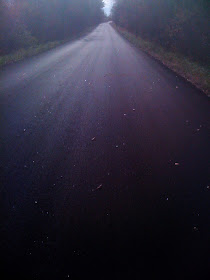Perhaps it is because Switzerland is a landlocked country that they held on to their Bicycle mounted army divisions for so long... The original Swiss Army bike, or 'Militarvelo' is simple, with one riding position and a single gear. It is extremly rigid and incredibly heavy. It weighs about 23kg - more than 50lb.
More recently, the army issue bicycle was developed using mountain bike technology, and that is the example you see here. It combined the qualities of the older roadster-style bicycle with the modern handlebars, brakes, and rear derailler of a mountain bike. Of course, the most obviously unusual feature are the many fitted bags
When I first saw these bicycles, they looked like the perfect do-everything bike. A bike you could hop on anytime and take on any terrain under any weather. A bicycle that also had plenty of load capacity and a simple, rugged appearance.
Of course, being more of a bike snob then a bike historian, my immediate impulse is to hone and improve the concept. A lightweight steel mountain bike frame with rack and fender mounts would be a great starting point, fitted with high quality componentry and racks. A classic leather saddle such as a brooks would look perfect with battleship grey or black paintwork, and the racks and accessories could be painted to match.
'Fit-for-a-purpose' is the best way to describe the quality that all the best bicycles have - and these Militarvelos are a great example of the breed.
More recently, the army issue bicycle was developed using mountain bike technology, and that is the example you see here. It combined the qualities of the older roadster-style bicycle with the modern handlebars, brakes, and rear derailler of a mountain bike. Of course, the most obviously unusual feature are the many fitted bags
When I first saw these bicycles, they looked like the perfect do-everything bike. A bike you could hop on anytime and take on any terrain under any weather. A bicycle that also had plenty of load capacity and a simple, rugged appearance.
Of course, being more of a bike snob then a bike historian, my immediate impulse is to hone and improve the concept. A lightweight steel mountain bike frame with rack and fender mounts would be a great starting point, fitted with high quality componentry and racks. A classic leather saddle such as a brooks would look perfect with battleship grey or black paintwork, and the racks and accessories could be painted to match.
'Fit-for-a-purpose' is the best way to describe the quality that all the best bicycles have - and these Militarvelos are a great example of the breed.






































































